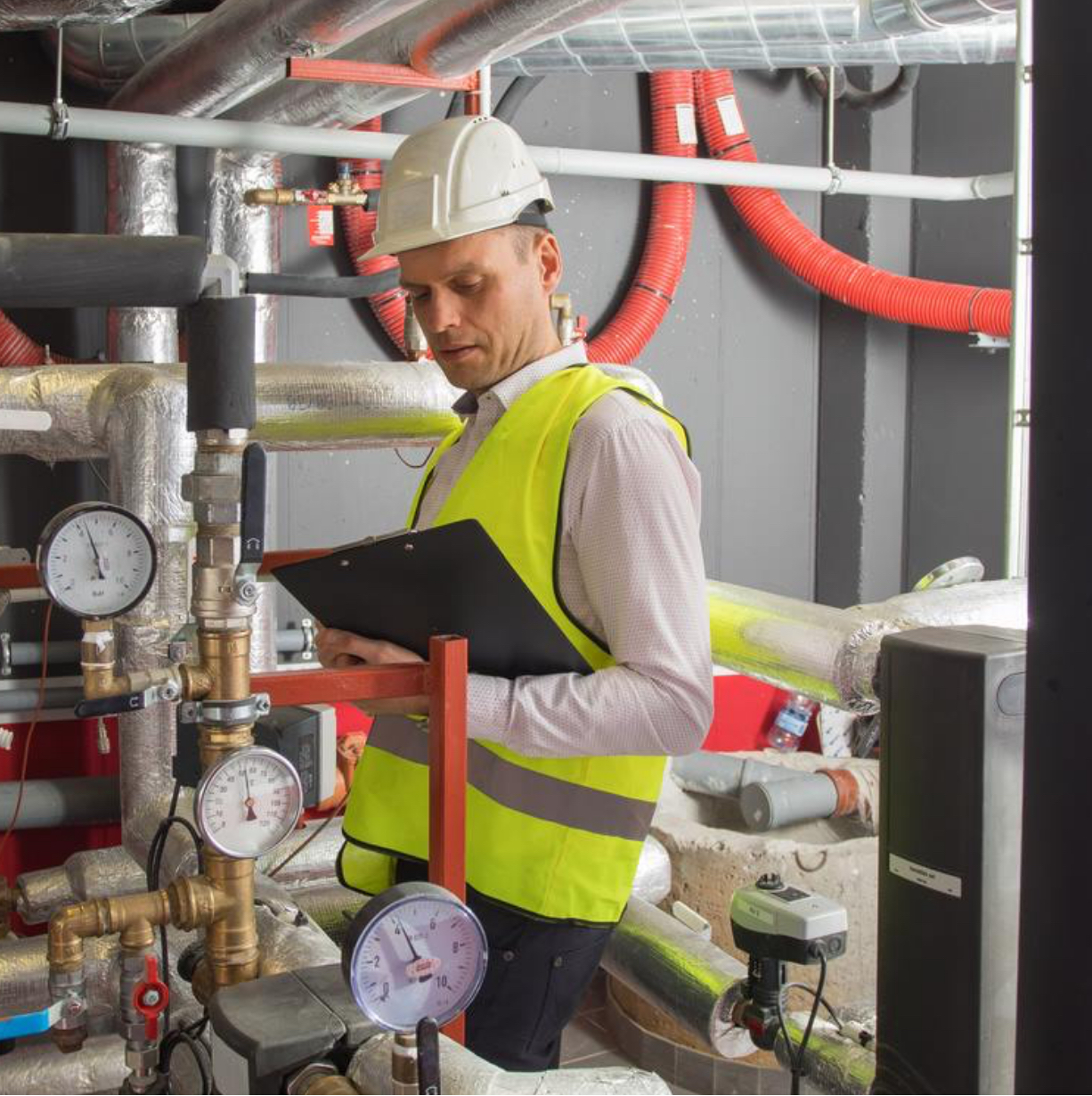Whether you own or manage an office building, shopping center, hospital, warehouse, factory or another commercial facility, heat exchangers are an essential part of your heating, ventilation and air conditioning (HVAC) system.
A heat exchanger is a device used to transfer (or exchange) heat (energy) from one fluid to another, or from a hot medium (such as the burned gas or oil in your furnace) to a cold medium (e.g., your building). This transfer of energy is used in both heating and cooling applications, and can be between refrigerant and water, refrigerant and air, steam and water, and water and water. A well-functioning heat recovery system is vital because it can increase your system’s energy efficiency and reduce energy consumption, thereby lowering your utility bills.
Legacy Mechanical sells, installs and services a wide range of heat transfer equipment. All of the heat exchangers we carry do the basically same job—transfer heat from one fluid or medium to another—but they have many different ways of getting the job done.
One way in which heat exchangers vary is the direction in which the liquids flow during the heat transfer. Most exchangers use one of these three flow arrangements:
Counter-flow patterns
Fluids enter the exchanger from opposite ends, flow in different directions, and exit at opposite ends. This flow arrangement tends to be the most efficient.
Cross-flow patterns
Fluids travel perpendicular to one another through the exchanger.
Parallel-flow patterns
Hot and cold fluids enter the exchanger at the same end, and flow in the same direction to the other side.
Heat exchangers are further classified based on construction features and composition. Some of the main types of heat exchangers used in HVAC systems are:
Heat pipe exchangers.
With this setup, an evaporator is separated by condenser via a plate. Hot air enters on the evaporator side, transferring its energy to the liquid refrigerant and boiling it. The refrigerant, now in a gaseous state, then passes through piping to the condenser side, as cold air passes over the refrigerant. Once the energy has been transferred, the refrigerant vapor returns to a liquid state and flows though the pipes to the evaporator side. This is usually accomplished through parallel-flow patterns.
Adiabatic wheel heat exchangers
An intermediate fluid is utilized to store heat, which is then moved to the opposite side of the exchanger unit to be released. Either cross-flow or counter-flow patterns can be used.
Spiral heat exchangers
Compact and basic in their structure, spiral heat exchangers consist of two separate spiral chambers: one that houses the hot liquids and the other that houses the cold liquids. The two chambers are separated by a spiral metal sheet, and fluids flow countercurrent to each other while inside the exchanger unit.
Fixed plate heat exchangers
These heat exchangers have fixed plates which are alternately arranged and separated from each other. Both the gases and fluids flow separately in the alternate plates, while heat is transferred between them. Flow patterns can be counter-flow, parallel-flow or cross-flow.
Finned-tube heat exchangers
With a finned-tubed heat exchanger, liquid flows into a series of mechanically or hydraulically expanded tubes, while gas or air is pumped around or over the pipework to cool the liquid. These exchangers may be enclosed in ductwork, or fully exposed with air flowing over them.
Tube and shell heat exchangers
As their name suggests, tube and shell exchangers are composed of a series of small tubes (known as a “tube bundle”) which are all contained within a cylindrical metal shell. Either the hot or cold fluid is passed through the tubes, and the other fluid is pumped into the surrounding shell, facilitating the heat transfer. Tube and shell exchangers can be customized, and perform well within a wide range of applications.
Shell and plate heat exchangers
This style of heat exchanger consists of a fully-welded circular plate pack (which is made by pressing and cutting round plates and welding them together) that serves as an outer shell, creating a flow path. Nozzles move fluids in and out of the plate pack to transfer heat. Shell and plate exchangers are compact and efficient. No gaskets are necessary, which provides security against leakage at high pressures and temperatures in unstable environments.
The types of heat exchangers described above can be effective in a variety of heat transfer applications. Exactly which one is best for your operation depends on many different factors—the type of process the heat exchanger will be used for, the kind of utilities that are available (cooling tower water, chilled water, steam, etc.), what level of performance is needed, and what fluids are available for heat removal, among other considerations.
Of course, with so many varieties of heat exchangers to choose from, it can be difficult to know which one is right for your operation. Still, it is critical that you select the proper type of heat exchanger based on your specific needs. Installing the wrong appliance can lead to poor plant performance, operability issues, and even equipment failure.
CONTACT USLet’s chat.
For a no-cost, no-obligation estimate, give us a call at 770-432-1171 or fill out the form below.
Services
Committed to Serving You
-
Extensive, Relevant Experience You Can Trust.Our Principals have a combined 80+ years of experience in the HVAC industry and 50+ years of craft supervision experience.
-
We Design and Build Custom Solutions.Our engineering staff can design/build a system to suit any customers’ needs. We also have Central HVAC Plant experts on staff that can help with the design, construction, and upgrade of large HVAC operations.
-
From Minor Retrofits to Major Industrial Construction.We have the experience to handle any project from the smallest tenant retrofit to large new construction projects, medical facilities (including surgery and trauma centers), industrial and institutional projects.


